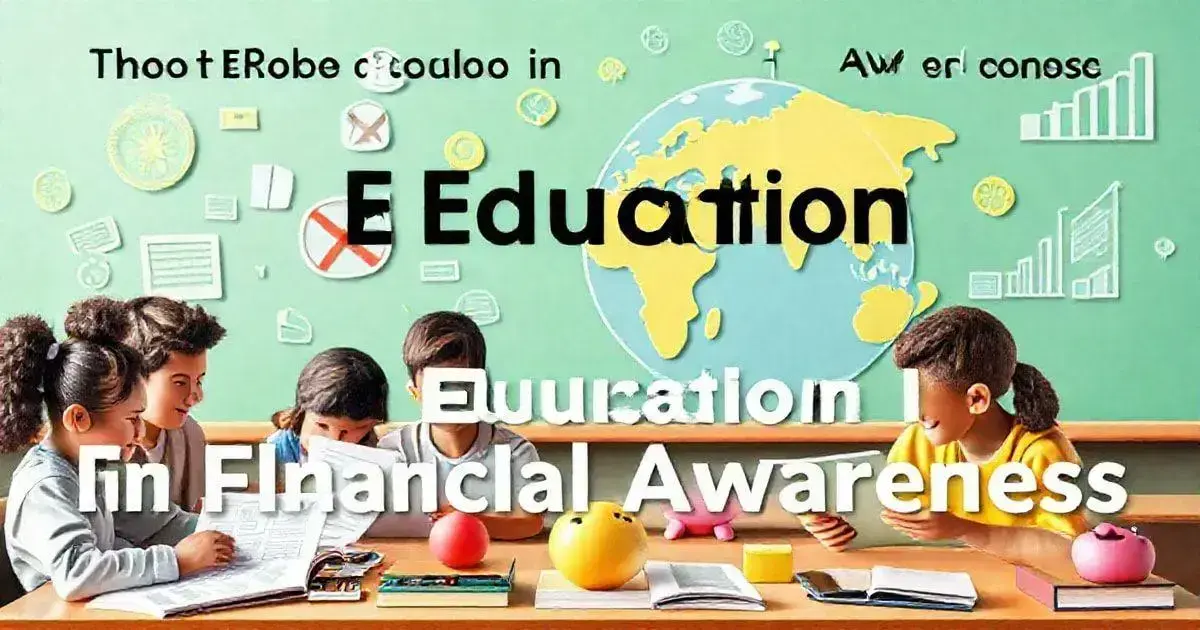Culture and financial literacy shape how we handle money, from saving to spending. Understanding this connection helps build better financial habits and smarter decisions.
Learning about financial literacy empowers you to take charge of your future. Recognizing cultural influences can uncover patterns that impact your finances and reveal ways to improve.
Curious to see how your culture affects your money choices? Keep reading for practical tips to grow your financial knowledge.
Understanding Financial Literacy
Budgeting is the first step in creating a roadmap for financial success. By tracking income and expenses, individuals can see where their money goes and identify areas for improvement.
Another important aspect of financial literacy is savings. It’s essential to set aside money for emergencies and future goals. This not only provides security but also allows for investment opportunities. Investing can help your money grow over time, and understanding how different financial products work is vital in making wise choices.
Additionally, credit management plays a significant role in financial literacy. Understanding how to maintain a good credit score can impact loan approvals and interest rates. Learning about interest rates, loans, and repayment strategies will empower individuals to make sound financial decisions.
Overall, being financially literate empowers individuals to take charge of their financial future.
Cultural Influences on Money Management
Culture and financial literacy play a vital role in shaping how individuals manage their money. Different cultures have unique traditions and values that influence spending, saving, and investing habits. For instance, in some cultures, family obligations dictate financial decisions, leading to greater spending on communal activities and support systems.
Spending habits can also be influenced by cultural beliefs surrounding wealth. In certain cultures, displaying wealth through material possessions is highly valued, leading to higher spending on luxury items. Conversely, others may prioritize saving and investing for future generations, reflecting a long-term perspective on financial health.
Furthermore, financial education within communities can vary significantly. Some cultural groups may have limited access to resources or education on managing finances, resulting in a lack of financial literacy. Promoting financial education in a culturally sensitive manner can help bridge this gap and empower individuals to make informed money management choices.
Understanding these cultural influences is essential for developing effective financial strategies that respect individual backgrounds and foster better money management practices.
Strategies for Improving Financial Literacy
Strategies for improving financial literacy are essential for encouraging better money management practices among individuals. One effective approach is to provide educational resources that cater to different learning styles.
For example, financial workshops can engage participants through interactive discussions, while online courses can offer flexibility for self-paced learning. Incorporating culture and financial literacy into these resources can make learning more relevant and relatable to diverse audiences.
Another strategy includes community involvement. Partnering with local organizations to promote financial literacy initiatives helps reach a broader audience. Community events can provide a platform for experts to share their knowledge and answer questions about personal finance.
Understanding culture and financial literacy ensures that these programs are tailored to the unique needs of each community, enhancing their effectiveness.
Incorporating technology into financial education is also beneficial. Mobile apps that gamify learning can make understanding finance fun and engaging. These tools can teach budgeting, saving, and investing principles through real-life scenarios.
Furthermore, encouraging mentorship can significantly impact financial literacy. Connecting individuals with financial mentors allows them to learn from someone with experience, providing guidance on making smart financial decisions.
Overall, these strategies create a comprehensive approach to enhancing financial literacy and ultimately lead to better financial outcomes for individuals.
The Role of Education in Financial Awareness

Moreover, community workshops can be a fantastic resource for adults seeking to improve their financial awareness. These workshops often offer practical advice and one-on-one guidance, making complex topics more accessible. Encouraging participation in such programs increases overall financial literacy in communities.
Additionally, leveraging online resources provides a flexible option for learning. Many platforms offer courses and materials that allow individuals to learn at their own pace, catering to various schedules and preferences.
Ultimately, enhancing financial awareness through education creates a society that is more informed and capable of making sound financial decisions.
Cultural Barriers to Financial Literacy
Cultural barriers to financial literacy can significantly hinder individuals from making sound financial decisions. These barriers often stem from language differences, which can make understanding financial terms and concepts challenging.
In such cases, addressing culture and financial literacy is crucial to bridge the communication gap and ensure that everyone has access to the necessary financial knowledge.
For instance, people who are not fluent in the dominant language may struggle to comprehend financial documents, leading to a lack of awareness about their rights and responsibilities. Integrating culture and financial literacy into educational initiatives can help individuals from diverse backgrounds better navigate these challenges and access the resources they need.
Additionally, cultural beliefs can influence attitudes toward saving and spending. In some cultures, there might be a strong emphasis on immediate consumption rather than long-term financial planning. This perspective may discourage practices such as saving for emergencies or investing for the future.
A lack of access to education further compounds these issues. Many communities may not have sufficient resources or programs focusing on financial literacy, leaving individuals without the necessary skills to manage their finances effectively. Local organizations can play a crucial role in addressing these gaps by providing tailored financial education that resonates with the community’s cultural context.
Moreover, societal norms and expectations can create additional pressure. Individuals may feel compelled to prioritize family obligations over personal financial goals, which can lead to financial instability. Recognizing and addressing these cultural barriers is essential for improving financial literacy and empowering communities.
Future Trends in Culture and Financial Education

- Technology Integration: Online learning platforms are providing flexible access to financial literacy courses, catering to diverse learning styles.
- Personalized Learning: Programs that adapt to individual learning paces and knowledge levels are enhancing understanding and retention of financial concepts.
- Cultural Relevancy: Educational materials reflecting community cultural values are increasing engagement and improving financial literacy outcomes.
- Gamification: Incorporating interactive games and simulations makes learning about finances enjoyable, especially for younger audiences.
- Collaborations: Partnerships between financial institutions and educational organizations are creating resources to inform the public about financial products and services.
Conclusion About Culture and Financial Literacy
Understanding the relationship between culture and financial literacy is vital for improving financial habits within communities. By recognizing cultural influences, we can tailor financial education programs that are more relatable and effective, fostering better engagement and understanding.
Promoting strategies that enhance financial literacy can empower individuals in making informed financial decisions. Through education, technology, and community involvement, we can break down barriers and create a financially informed society, where culture and financial literacy go hand in hand to support diverse needs and perspectives.
As we move forward, it is essential to stay aware of future trends in financial education that focus on inclusivity and cultural relevance, ultimately leading to greater financial awareness for everyone.